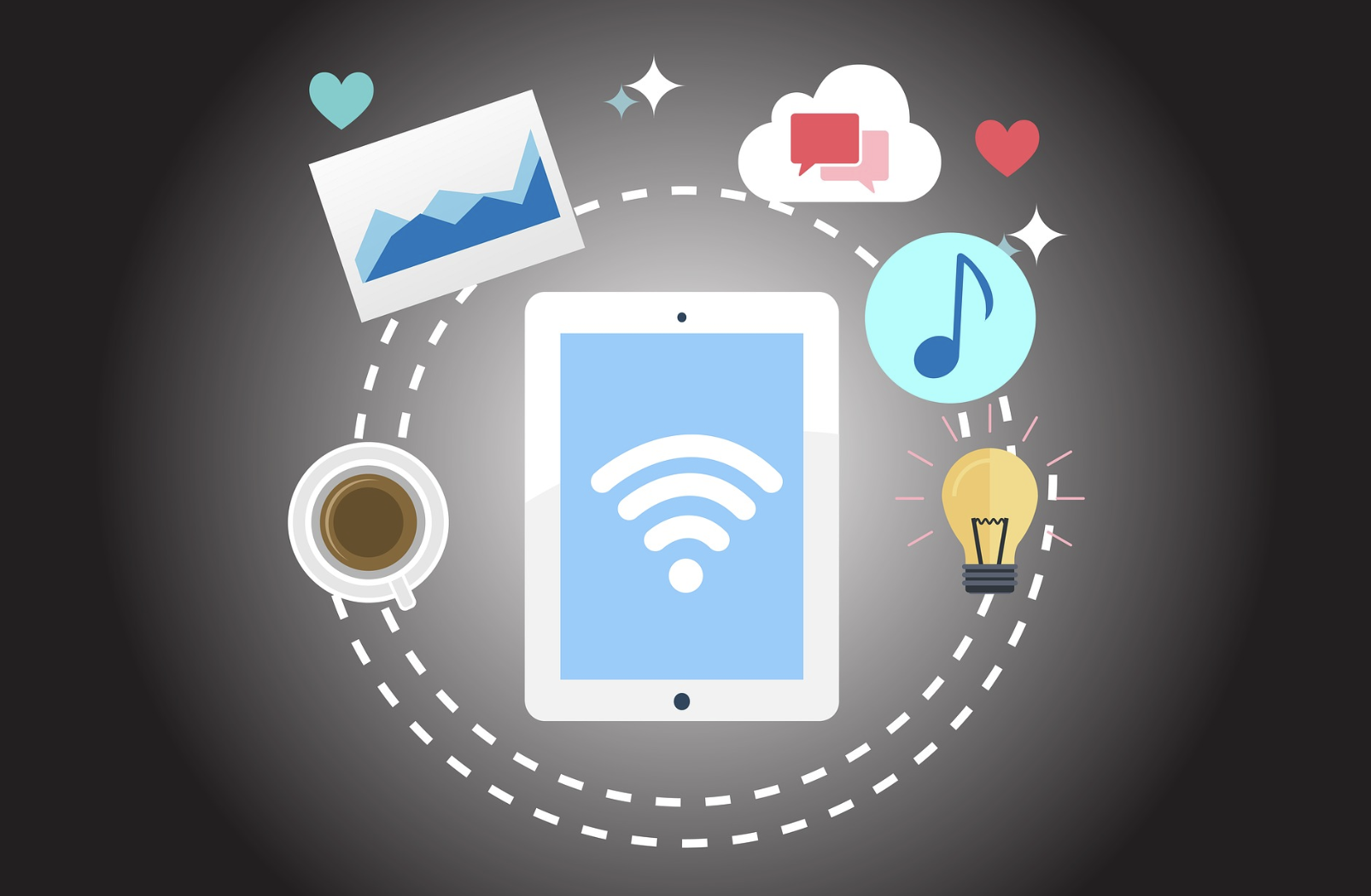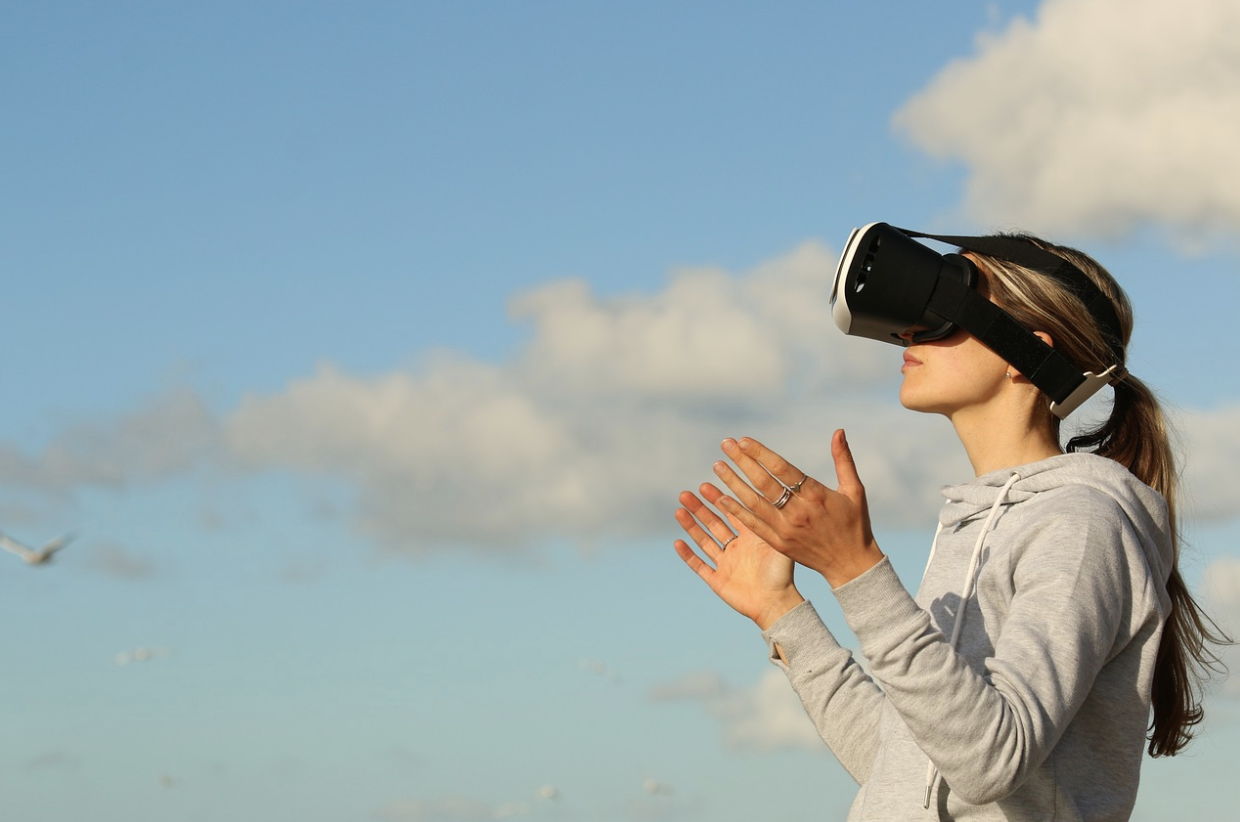What Is Digital Media and How Can It Help My Career?


The term “digital media” is everywhere; you may have seen ads for a “Master’s Degree in Digital Media” or a “Certificate in Digital Media.” But what exactly is digital media, and is it worth learning more about?
In a world where nearly everything is becoming digitized and people spend an average of seven hours each day using the internet, digital media is becoming more important than ever. It’s likely that you spend a significant amount of time each day interacting with digital media. In fact, by reading this article, you’re interacting with digital media. 
An image showing some different types of digital media. Source: Pixabay.
Digital Media Definition
To define digital media, we can start by looking at the term itself.
“Digital” is defined as any data represented by a series of digits (1 and 0). “Media” refers to a method of broadcasting or communicating information.
So, in layman’s terms, digital media refers to any kind of information broadcast to us through a screen. This information might be found on websites or in applications, software packages, video games, and more.
You might think this makes digital media a very broad term—and you’re right. In practice, almost anything we access through a digital device can be thought of as digital media.
However, below we’ll offer some more specific examples to make the concept more concrete. If you’re thinking of studying digital media, it can be helpful to narrow down which area of this wide field you would like to specialize in.
Digital Media Examples
Digital media can be thought of in many different ways. We can think of it in terms of its purpose, the device we access it on, or which of our senses we use to perceive it.
Here, we’ll present some different types of digital media, broken down into categories.
Formats
Audio
Audio refers to the digital media we listen to. We can listen to audio by streaming it online, or listening to .mp3 or .mp4 files (among others) offline.
Some examples of digital audio include:
- Songs produced for video streaming sites (e.g., YouTube)
- Songs that are sold digitally (via marketplaces like iTunes and Google Play)
- Video or computer game soundtracks
- Audio transmitted over the internet (VoIP)

A man listening to digital audio. Source: Pexels.
Video
Video is both visual and auditory. Like audio, it can be accessed both online and offline.
Here are some examples of digital video:
- Videos produced for video streaming sites
- Movies that can be streamed or downloaded from the internet
- Live video (for example, webcam chats or online conferencing)

Digital video can be viewed either online or offline. Source: Pixabay.
Photos/Illustrations
Photos and illustrations can be found everywhere on digital devices. This type of static media is an essential part of the user interfaces of computers, phones, and tablets. Just have a look at your computer’s desktop: each one of the icons is a tiny illustration.
Besides the interface of digital devices themselves, photos and illustrations are also distributed throughout the internet. They are:
- Used to illustrate blog posts and articles
- Sold as standalone pieces of digital art
- Used as part of website and software interface designs

An example of icon illustrations, which can be part of a user interface. Source: Pixabay.
Text
Most digital media includes some kind of text. Text allows you to navigate through the user interfaces of digital devices and software packages. Online, search engine crawlers use text to help you locate web pages.
Digital text can:
- Help you navigate a website
- Inform or entertain you, as part of a blog post or article
- Explain how to use a piece of software
Content Types
Now that we’ve given some digital media examples in terms of format, let’s move on and discuss a few different content types. While “format” has to do with how we experience a piece of media, “content type” refers to what the media is used for.
Ebooks
An ebook is a book published in a digital format. This could mean anything from a 10-page PDF on weight loss to a work of literature sold digitally and accessed via an e-reader.
Ebooks serve many different purposes. Some types of short commercial ebooks, such as white papers, demonstrate an organization’s expertise on a certain topic. Others, like the weight loss ebook mentioned above, serve as lead magnets in digital marketing (they are given away for free in exchange for the reader’s email address, which can then be used for marketing purposes).
But many ebooks simply serve the same purpose as regular books: they are meant to be read and enjoyed, using an e-reader or another digital device. This kind of ebook is sold in marketplaces such as Amazon’s Kindle Store.
Get To Know Other Design Students
Teliah Jackson
UX Designer at AAA
Aisha Butt
UX Associate at Meta
Sadie Rubio
UX Designer And Researcher at Lumea
Blog Posts/Articles
Blog posts and articles are another type of digital media. They are shorter than ebooks, can be accessed online, and can typically be read in five to 20 minutes.
The purpose of a blog post or article is to quickly inform the audience about a certain topic. They may be written by:
- A personal blogger
- A journalist
- A company
Social Media
Popular social media networks include Facebook, Twitter, Instagram, and LinkedIn. On social media, content can be posted by anyone. Social media is used:
- By individuals, to share content with friends and family
- By commercial brands, to advertise their products and communicate with customers
- By media companies, to share their articles and open a dialogue with readers
Advertising
Online advertising is another example of digital media. Some types of digital media ads include:
- Website banner ads
- Search ads
- Video ads
- Social media ads
Digital Art
Some digital media creators produce illustrations, videos, music, or photographs as a form of art.
Digital art can be sold or monetized on marketplaces such as Getty Images (photos), iTunes (music), and YouTube (videos).
Video Games
Video games are designed for people’s entertainment. They are typically played on a gaming console, though some types of games can also be played on a computer, tablet, or smartphone.
A video game incorporates many types of digital media, including art, text, and video.
Virtual Reality
Finally, a new type of digital media that is becoming steadily more popular is virtual reality.
Virtual reality involves wearing a headset and viewing an immersive digital experience. This experience might include colors, sounds, or highly realistic graphics and video.

A woman experiences virtual reality through a headset. Source: Pixabay.
Exploring the Digital Media Industry
Now that we’ve talked about the different types of digital media, you might be wondering what all this means for your career. How can you fit into the digital media industry, and what kind of skills are required for digital media professionals?
As we explained above, “digital media” is a very broad term, encompassing many different types of content. However, digital media professionals usually work in specialized fields. Here are just a few examples:
UX Designers
UX designers help make products, including digital media products like websites and apps. As a UX designer, you might be responsible for creating wireframes—outlines that show what the final product will look like and how it will be organized. You may also be responsible for conducting user research to understand how your customers use your product and what their needs are (read about UX design here).
Related: How Do You Become a UI/UX Designer?
Content Creators
As a digital content creator, you might write blog posts and website text, sell photographs and illustrations, create social media content, or make videos for a streaming website.
Content creators may have job titles such as:
- Copywriter
- Photographer
- Graphic designer
- Videographer
- Social media “influencer”
Developers
Developers build digital media technology, such as the back end and front end of websites, apps, software packages, and more. By writing code, they help create the infrastructure on which visual media is displayed.

Developers write code to create digital media products. Source: Pixabay.
Project Managers
Project managers are responsible for “bringing it all together.” Their job is to manage the overall function of the project team—to coordinate the activities of UX designers, developers, content creators, and other team members to create a finished digital media product.
Project managers need excellent organizational skills. They are responsible for maintaining a birds-eye view of the project, meeting deadlines, and mediating between workers with different personalities and skill sets to ensure the project is completed to specifications, and on schedule.
If you’re interested in working with digital media, it’s a good idea to narrow down your goals. Which aspect of digital media fascinates you most: is it creating the content, developing the technology, representing the users, or managing the whole process?
You can also think about which types of media interest you. Would you prefer to work with video games, websites, apps, software packages, or virtual reality? By defining your areas of interest, you can begin to build a career that suits your desires, as well as the market’s current needs.
Since you’re here…
Interested in a career in UX design? Rise to the top of the CV pile when you enroll in our UX Bootcamp—you’ll get a UX job or your tuition money back. Take a look at our student reviews and test out our free UX curriculum to get a feel for our style and results. TL;DR: average starting salaries for our students = $85,440. Let’s do this.





